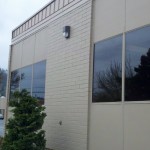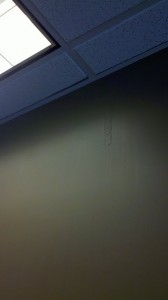I have never (as of yet, knock on wood) heard a construction worker say, “you know, Mr. IH, Â the air around this construction site is moldy, dirty, full of fungus, and smells. I’m not sure I can work here”. Never heard it. It’s probably because these guys (& girls) are so tough! Right?
More commonly what I hear in construction is:
- I’ve got a client who has some water leaks, what should we so?, orÂ

- What can we do to help them?
- How much mold can my employees remove?
- Is it OK for my employees to remove moldy building materials?
The most important thing is: make a decision about what you will allow (as a company) your employees to do? What business are you in? Will you let an employee take out a sheet of moldy wallboard? Will you allow them to demo an entire bathroom with black fungi all over the walls?  There are some guidelines (page 2) and here. OSHA does not have specific rules for this type of work. However, OSHA (and you) will be concerned if your employees are exposed to this type of activity. They will cite you under the general duty clause.
So, the next decision is what level of protection (level A? full face respirator? paper dust mask?) will my employees need to wear? again, it depends (see link above). But as a general rule and in most scenarios, a full face respirator with HEPA filters is perfect. A half-face is fine, at times, but the eye protection during construction is easier (less fog on your safety glasses) if you are wearing a full-face.
Finally, decide if you will either:
- clean it (guidelines here)
- replace it (tear it out, and build new)
- subcontract it (please, use a remediation contractor, not your brother in law)
This will depending on many factors including; size of damage, where the damage occurred, access, available workforce, etc.
Stay close, I will attempt to blog more about this topic in the coming weeks.
